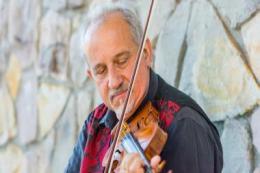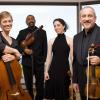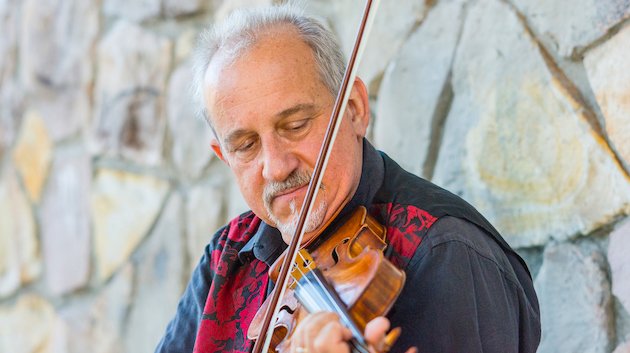
Violinist, founder of Quartet San Francisco, composer, and music educator Jeremey Cohen is a musician’s musician. Which doesn’t mean the multi-Grammy nominated Cohen is not also an artist with deep awareness and appreciation for audiences and music students.
Instead, the needs of musicians, students, and audiences have propelled Oakland-based Cohen into enormously unexpected endeavors. Call him a musicpreneur, if you will.
Classically trained and a student of Itzhak Perlman and Anne Crowden, Cohen has given genre-busting performances with the Virginia Symphony, California Symphony, Turtle Island String Quartet, and many more. Then there are his numerous award-winning albums; appearances on recordings by Linda Ronstadt, Ray Charles, Aaron Neville, Howard Keel, Carlos Santana, John Williams, and film and television soundtracks; plus compositions or arrangements in the repertoire of Quartet San Francisco, the San José and San Francisco Chamber Orchestras, Reno Philharmonic, and San Francisco Symphony, among others.
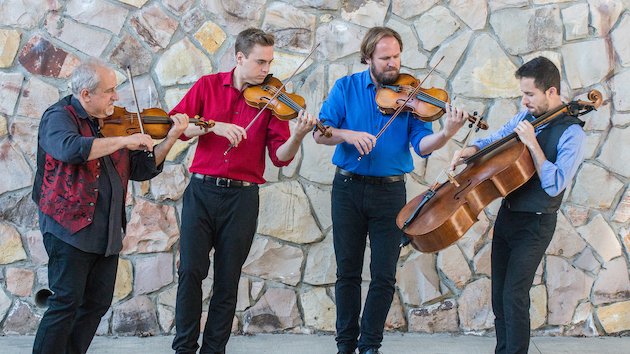
Well before the coronavirus pandemic shoveled artists of all kinds and calibers onto the internet, Cohen was becoming a digital-music maven. “For musicians to be relevant these days [they must] be active online,” he says in a phone conversation. The concept caused Cohen, as an educator, to drum up String Masters, an advanced, comprehensive, highly-interactive online music conservatory platform.
During our conversation, Cohen talked about the impact of COVID-19 on the quartet (Cohen, violinist Joseph Christianson, violist Chad Kaltinger, and cellist Andrés Vera), his burgeoning chops as a videographer, the String Masters platform, and navigating a career as a classically-trained musician whose profound interest and specialty is developing contemporary repertoire for modern string players.
Tell me about the impact of the pandemic on your life as a musician and teacher, and on your quartet and colleagues?
A lot of people are being driven online. For colleagues of mine who have been teaching in institutions, private studios, or music schools, life changed instantaneously. The ability to teach in person has been largely compromised. They’re using G [Google] Chat, Zoom, and typical places people go for internet conferencing. Some people struggle with that, some refuse to do it. But the younger crowd are more adept at adapting to the computer age and have instantaneously moved to an online reality.
For me, Campolindo High School [in Moraga] went immediately to online in March. For Quartet San Francisco, initially, we lost our touring roster. We immediately went into a tailspin about not being able to reach our audiences. After having operated for 20 years, I thought, “I’ll be damned if we’ll be cut off.” That meant getting involved with social media and networking, creating concert videos to present.
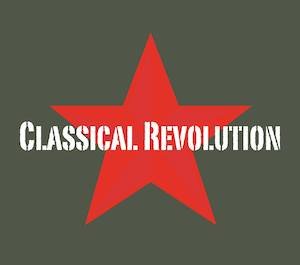 Early on, I was asked to be in a festival sponsored on Facebook by Classical Revolution. It was phenomenal. I had gone from being shut in and all of a sudden, I could see people commenting from all over the place. I think I counted 700 people watching my presentation. I got really excited as if I were performing onstage. I had a palpable sense of people reacting to me in real time. I realized they were there and it meant something to them. It was really surprising to me. What I thought I had lost — I felt it was completely missing — all of a sudden doing this Facebook Live thing, I realized there were people paying attention to me and the music I was playing meant something to them. We can’t lose that connection to other humans, whether it’s in a concert hall or online. You never know ... what you are doing could change a life.
Early on, I was asked to be in a festival sponsored on Facebook by Classical Revolution. It was phenomenal. I had gone from being shut in and all of a sudden, I could see people commenting from all over the place. I think I counted 700 people watching my presentation. I got really excited as if I were performing onstage. I had a palpable sense of people reacting to me in real time. I realized they were there and it meant something to them. It was really surprising to me. What I thought I had lost — I felt it was completely missing — all of a sudden doing this Facebook Live thing, I realized there were people paying attention to me and the music I was playing meant something to them. We can’t lose that connection to other humans, whether it’s in a concert hall or online. You never know ... what you are doing could change a life.
Is the quartet working on new repertory, meeting regularly, or developing a video series or new recordings?
Yes, yes, yes, and yes. We just presented a 45-minute online program for the 2020 Cabrillo Festival. Those were in the days we were just getting started in video production. We didn’t have as much precision then as we do in the videos we are doing now. Just learning filmmaking skills was formidable. Some of the stuff at Cabrillo was a live concert we did in Bolinas before Covid. I took — with their permission — that live footage and created new videos combined with us playing from our home studios or living rooms.
Did it require substantial sound engineering, because of the different recording circumstances?
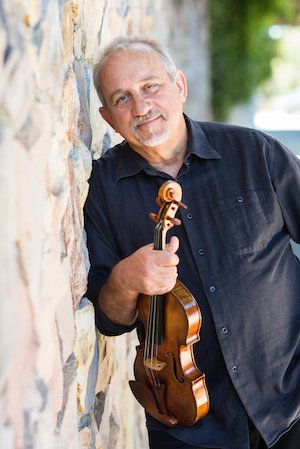
In some cases, I’m using the original sound source and I send it as a soundtrack to everyone and they listen to that with an earpiece while they record their parts so they are perfectly syncing to the live performance. Other cases I take their original sound in their homes and blend them. As much as I could, I manipulated to balance the instruments. We made sure everybody is using a decent microphone. Being an engineer is a full-time job and I wish it wasn’t me when I have to do it. It’s a real skill, separate from being a violinist.
Talk about staying relevant and your role as a cinematographer/video artist:
I’ve had managers coming at me for years saying we need to put this on the website, we need to put more video up. We have Facebook, Instagram, and the website managed internally within the group. But the production of video is separate from that and is an entirely different set of skills.
I’ve thought for a long time it would be interesting to make videos from the perspective of [being] inside a string quartet instead of looking from an audience at a group of people performing. From the perspective of the first violinist, the violist, the cello player. What does it look like? Who am I looking at while playing?
Between me recording and putting together our videos and our second violinist Joseph who runs a podcast, we’re able to release things on a semiregular basis. People see us coming out with new material. We’re doing collaborations with other musicians to reach audiences bigger than we might even have in a concert hall. Ears and eyes are our currency. They’re the real estate for musicians. For people to lay eyes on you and ears on your music, that’s our best chance for survival.
Tell us about the String Masters videos. Who records them, how are they marketed, how does the pay work, and so forth?
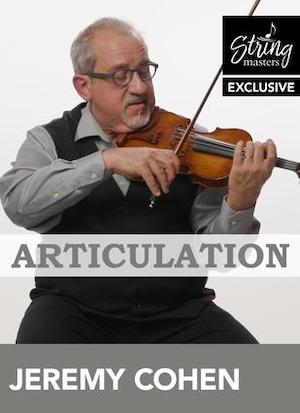 It’s a web-based application so it lives in a browser. It was developed by me and some partners in Canada who were amateur musicians. We started doing lessons on Skype and Google Chat. A woman who’s a web developer came out as we started to do lessons on Skype. We hated doing lessons on Skype: It’s really frustrating. We wanted to develop a program that was designed from the ground up for private studio lessons. She asked, “What do you need on the screen to enhance the one-on-one teaching experience?”
It’s a web-based application so it lives in a browser. It was developed by me and some partners in Canada who were amateur musicians. We started doing lessons on Skype and Google Chat. A woman who’s a web developer came out as we started to do lessons on Skype. We hated doing lessons on Skype: It’s really frustrating. We wanted to develop a program that was designed from the ground up for private studio lessons. She asked, “What do you need on the screen to enhance the one-on-one teaching experience?”
We started meeting two-and-a-half years ago, and have a platform that is developed by musicians for musicians. This is a journey. It’s an environment, a place for musicians to work together and not feel beat up by the internet. It’s a sandbox for musicians. It’s purely useful for our needs. It makes being online a happy place.
It’s not a place to watch videos. I can talk to you on String Masters and hear you play in high resolution; I can watch you play and see the music you are playing and make notations. It’s a living, breathing process. It replicates a live studio music lesson.
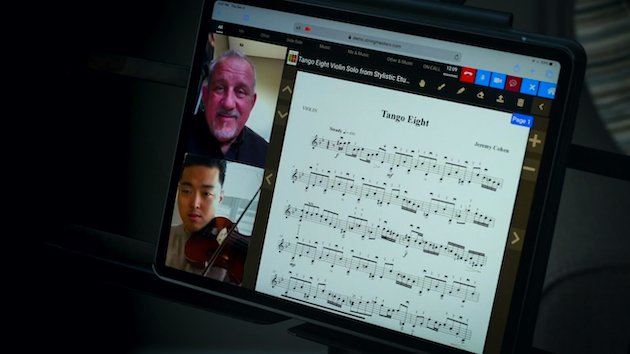
Is there any way this can translate into an application for ensemble rehearsing?
There still is no real application or real-time duet playing because the web is a one-way communication device. We hope with 5G, there will be two-way open communications, but there’s no live real-time ensemble playing on the internet. It has to be prerecorded. We have figured out ways to replicate duet playing, but there’s no way to achieve it without latency on the internet.
You mentioned to me in an earlier interview that there is a live-performance dynamic that can never be replaced. Can you explain?
Andrés, my cellist, and I went to Herbst Theatre and filmed a video the other day. The physical hall, even though it was empty, becomes a personality. Creating sound in it becomes a huge factor in live performance. The character of the hall, the acoustics, the distance to the back wall where you hear your sound coming back at you or bouncing through the room — the hall becomes a player alongside the group and audience. It really informs the performance. It can really energize or make a playing situation challenging. Each situation you walk into is entirely unique. The repertory changes, the audience changes, the hall changes, and those are all part of the experience of performing live. It’s now a memory for us and it’s harder to feel that energy in your home in your private space. It’s such a different animal.
A hall like Herbst is important in so many ways. The musical information that it gives back to the performers onstage: It’s a perfect size for a chamber ensemble — under a thousand seats. The sound can blend acoustically in the space and achieve a perfect reality for the projection of the instrument. When I play live, I’m waiting for the room to respond to my sound, for information coming back to me. I say to the quartet, play to a chair in the 25th row. Focus your sound to play back to that chair. The projection and sound are amplified in a space like the Herbst. I realized how much I missed it.
Is there material on one of the quartet’s albums you’d like to return to, maybe expand?
Every recording I’ve done from Journey all the way back are like children. People ask me what my favorite is. I have a lousy answer: Every piece in the moment I am playing it needs to be my favorite piece or I’m not doing justice to it.
Our current quartet is particularly interested in [the music of] Raymond Scott, and wants to play a lot more of it. When I write music, I have a tendency to lean into tango and Latin-style music. I don’t know why; I wasn’t particularly trained in it. I like bringing strings to music that was not typically performed in strings. Beatles, Stevie Wonder, and rock ’n’ roll things.
Where is the quartet going musically? Scott gives us great joy and energy. Playing music relevant to members of the group. We have a lot of material we’re interested in moving towards, but we have a lot of demands on us for upcoming concerts. The next album will be all music of Raymond Scott. We do find ourselves playing a lot of tango. I grew up listening to Dave Brubeck. My dad always told me there were four great B’s: Bach, Beethoven, Brahms, and Brubeck. We’ll keep to not playing composers alive many, many years ago, but music by composers relevant to our lives.
When you play a song by the Beatles, are you thinking about Beethoven or Bach?
Those two [abilities] live side by side inside my brain. They can live in complete harmony with each other. That means I have more flexibility to speak truly with my voice as informed by Bach and informed by [The Beatles’] “Eleanor Rigby.” [That harmony means] my classical playing is freer, more interpretive, more secure.
Are there specific demonstrations or words to articulate how your understanding and performance as a classically trained musician is enhanced by having delved into jazz, rock, bluegrass, folk, or other genres?
We have navigated our entire 20 years while continuing to function as classical musicians learning to play music authentically in contemporary styles. The affectations in music now are different than they are according to classical standard training. Modern concepts of vibrato, sliding between notes, rhythmic articulation on string instruments, chopping — absolutely inform our classical technique. We’re learning to speak with different kinds of accents, inflections, patterns, and repetitions. You see more flexibility with your technique.
When you go back to classical music, you have a stronger and more developed voice. All of our training has been solely attached to classical music for the past 100 years. Only now are contemporary styles embraced and taught. My biggest YouTube videos are technique-training videos. People are hungry for how to speak in different voices than what their classical training offers them.
Quartet SF has focused on playing in a more contemporary style. If it’s rock ’n’ roll, we crash and slash more than would be appropriate for classical music. If we’re playing “Bohemian Rhapsody” by Queen, we learn what a rock voice sounds like: It’s coarse, [with] harder attacks, bigger slides, and affectations inappropriate to classical music. It means I have more control, more direct capacity to reflect my internal voice, because I’ve been teaching myself to make my instrument respond to contemporary sensibilities.

